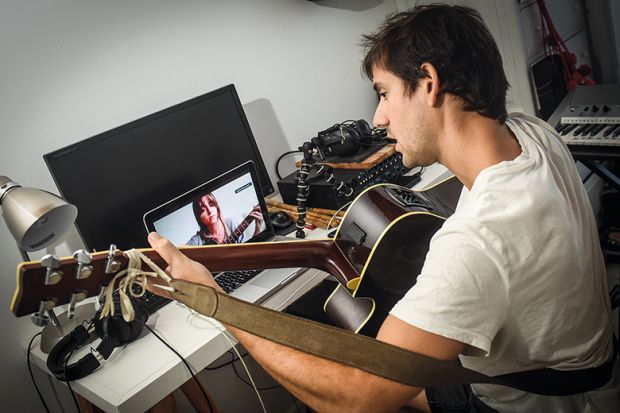The THE Latin America University Rankings will be published at 4pm BST on 7 July
When Argentina’s government ordered a national lockdown to control the coronavirus pandemic, universities had to adapt quickly. And while it is said that every cloud has a silver lining, if higher education is to find the opportunities in this situation and make the most of them, it must also consider the constraints related to resource availability and the structural characteristics of the university system.
The coronavirus shock delivered a hard blow to Argentina’s economy, which was already in bad shape before the pandemic. In 2019, the per capita gross domestic product was lower than in 2011, and the government has been trying to avoid a default on public debt.
So both public and private universities face tight budget constraints, and the funds available to overhaul teaching methods are limited. Students cannot be expected to make up any shortfalls because they and their households have lost income in the economic crisis – and almost half of Argentine university students work while studying.
At institutional level, two features related to the ability to deliver online teaching are important. Both the public and the private sectors are very heterogeneous in terms of the resources universities have to invest in innovations in teaching. Before Covid-19, some universities had begun to offer a few courses using online teaching and had incorporated learning platforms via virtual campuses. Faced with the lockdown, these universities were able to make use of their technology and resources to adapt quickly. They sped up the training of faculty and expanded the online teaching model to the rest of their courses.
For institutions with scant prior experience with online or virtual learning, this change was more traumatic; for many, the results, certainly in the short term, fall short of expectations. The rapid shift to remote learning might threaten the survival of some private institutions if students baulk at paying standard tuition fees for wholly online courses. The digital divide is an important issue to address if universities are to take advantage of the window of opportunity the pandemic has triggered.
Another challenge is that just a few universities have a critical mass of full-time professors. Only 11 per cent of the teaching posts at public universities were full-time in 2019. This affects the commitment that faculty can show in the face of demands to adopt emergency remote teaching and to track students’ needs.
Teachers unions, which have a stronger presence in public universities, have warned that online teaching should not alter the workload established in labour regulations and have expressed some discontent with the new working conditions. They claim that online teaching could affect professors’ labour rights, given the difficulty in setting a work schedule, the use of the home as a workplace, the use of personal equipment and the increase in personal costs, such as electricity and internet access. The unions also highlighted that online teaching could widen the learning gaps between students of different social classes.
One aspect that is not considered in the unions’ position is one benefit of online education: it can cut dropout rates among lower-income students. As many of these students must also work, dropouts are common because they have difficulties taking face-to-face courses. Nevertheless, to prevent the digital divide, some basic conditions must be met for all students, including quick, quality internet access and the equipment necessary to communicate remotely. Failure to ensure that these conditions are available for all could increase the high dropout rate, especially among first-year students.
In summary, once the pandemic has been overcome, the ability of universities to make the most of this window of opportunity for teaching innovation will vary according to their financial, human and technological resources. On the positive side, while it can be stressful, the mandatory transition to remote learning could be an enriching experience for all faculty. At some universities, this might spur the creation of hybrid models combining face-to-face and online education, which could help to improve the quality of teaching and learning.
Ana Fanelli is a senior research scholar at the National Scientific and Technical Research Council in Argentina.
The THE virtual Latin America Universities Summit will take place on 7 July. Register here.
后记
Print headline: Not everyone is a quick-change artist




